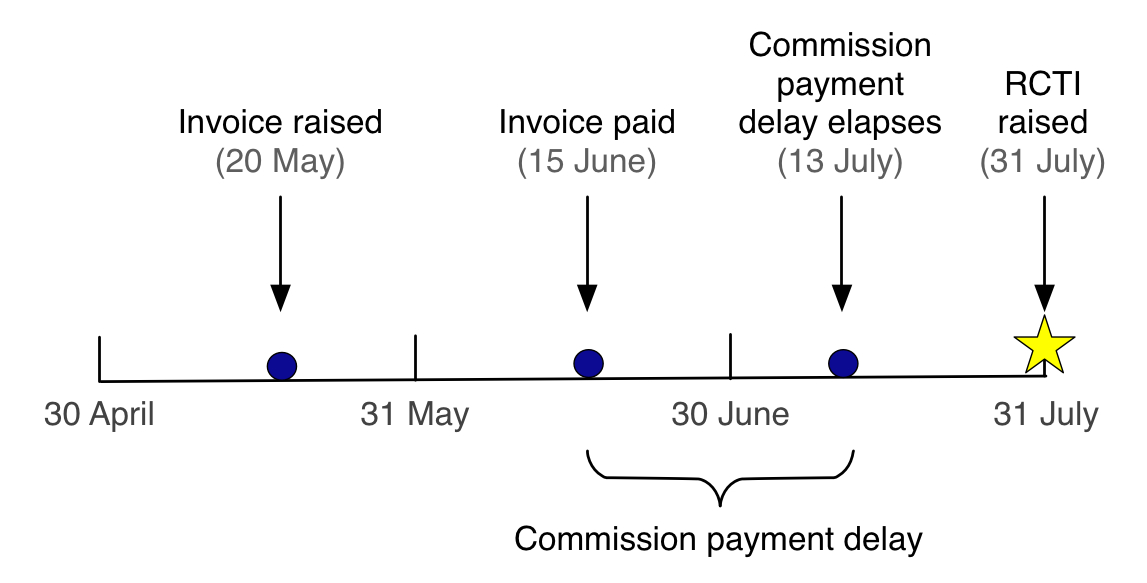When commissions are paid
Smile creates RCTIs during the billing run, based on the invoicing cycle of the commission earner. An RCTI includes the commission payments due to each commission earner on the account with an invoicing cycle that ends on the date of the billing run.
- the charge is listed on an invoice
- the invoice is fully paid
- the commission payment delay has elapsed
The commission payment delay is the period of time between when the invoice is fully paid and the commission is raised. This delay ensures that you do not pay commission on invalid payments, for example, bounced cheques. You can configure the length of the commission payment delay to suit your business needs.
The following example shows you when commission is paid for an invoice raised on 20 May. After the invoice is paid in full on 15 June, Smile begins the commission payment delay. In this example the commission payment delay is 28 days. The commission payment delay finishes on 13 July, and the commission is now eligible for payment. The commission earner's invoicing period ends on 31 July, and Smile includes the commission payment in the RCTI for this period.
Figure: Example: When commissions are paid

After you generate an RCTI, the commission account has a positive balance because you owe commission to the commission earners on the commission account. To ensure the account balance remains up-to-date after you make a commission payment, raise a debit note for the value of the payment and allocate it to the RCTI. Raising a debit note ensures that the account balance always correctly reflects the amount due to the commission earners on the commission account.